Kiyomizu-dera Temple: Kyoto’s Most Famous Temple
It seems that Kyoto has more temples in it than any other city in Japan. Of the numerous temples in Kyoto there are numerous temples in Kyoto, the most popular temple is without a doubt, Kiyomizu-dera Temple.
Kiyomizu-dera Temple
About Kiyomizu-dera Temple
Kiyomizu-dera Temple was created in 778, when a monk name Kenshin, guided by a vision in a dream, found a waterfall and made a hut.
A few years later, an the Shogun Sakanoue no Tamuramaro and his wife visited this temple while hunting deer. Kenshin preached to them about how precious all life is. They were very moved by his words and began to feel remorseful. Kenshin then converted his hut into a temple to enshrine his statue of Kannon.
Indeed, Kiyomizu-dera Temple has always been a popular spot. It appears in many masterpieces of Japanese classic literature, such as The Tales of Genji.
Unfortunately, although this temple has a long history, due to the many fires, most of the temple buildings were rebuilt sometime between 1631-1633.
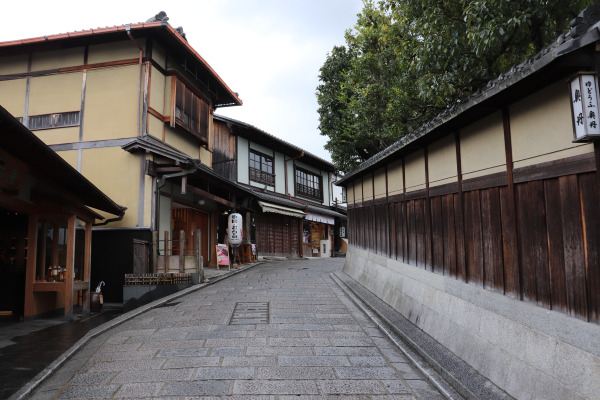
Getting to Kiyomizu-dera Temple
Kiyomizu Temple is only 15 minutes away from the Keihan Kiyomizu Gojo Station. This is probably better than taking a bus, as the bus can be really crowded.
From the station to the temple, it is really fun to walk as there are numerous vendors selling souvenirs.
Be sure to take time to explore Ninen-zaka and Sannen-zaka Street near the temple! They are really charming and defintalty exhibit the atmosphere of ancient Kyoto.
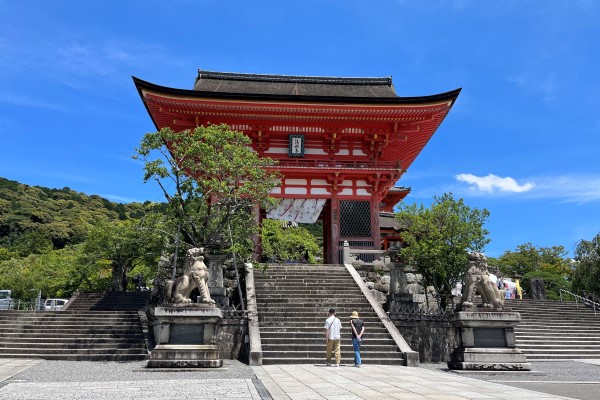
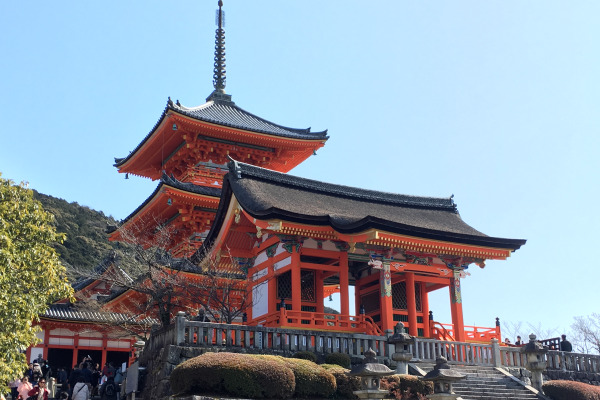
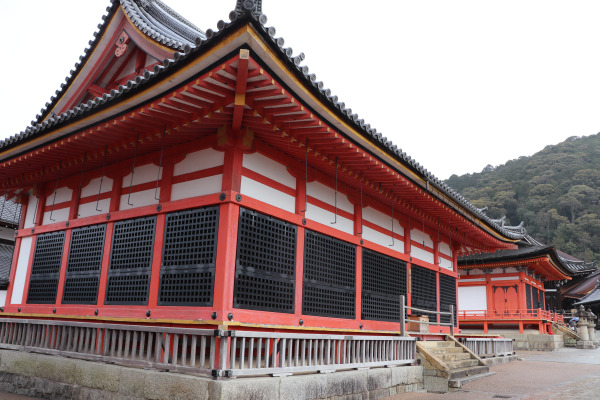
No matter when you come, there are usually a lot of tourists throughout the temple grounds.
Just about all first-time visitors to Kyoto, whether they are Japanese or not, will visit Kiyomizu-dera Temple. It is also a very popular site for students on a school trip. If you listen very carefully sometimes you can hear the students accents if they come from somwhere far away.
Kiyomizu-dera Temple is also the 16th temple of Saigoku Pilgrimage, so this fact definetaly draws visitors as well.
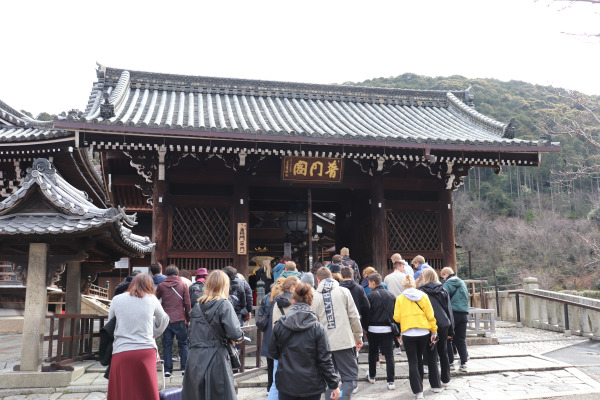
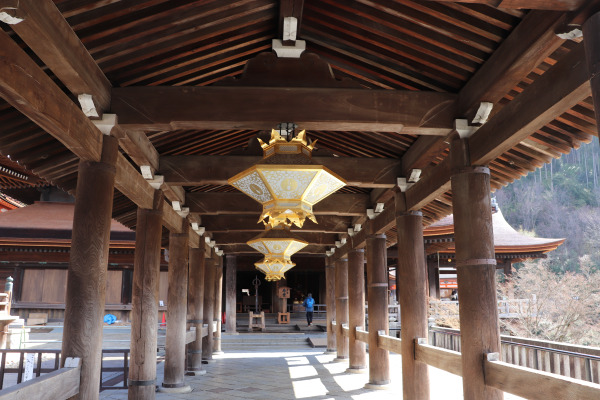

Temple Grounds
The main statue enshrined in Kiyomizu-dera Temple is Senju Kannon. However, compared to other Kannon statues commonly enshrined in temples, this Kannon is a bit unique as the pair of arms above her head joins and addtional set of hands. (senju means “a thousand arms”, so it has many arms!!).
Unfortunately, this unique Kannon is only avaliable to the public once every 33 years, as is the case with many temples of the Saigoku Kannon Pilgrimage.
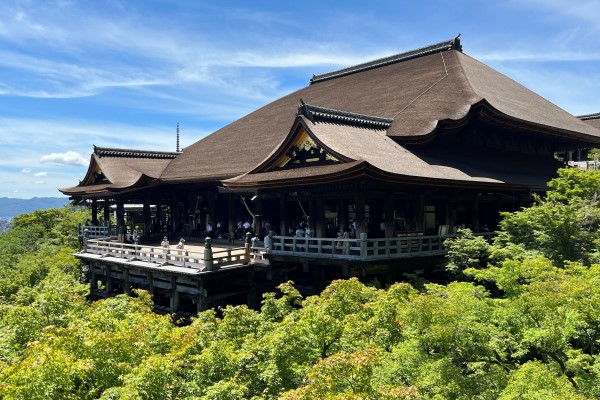
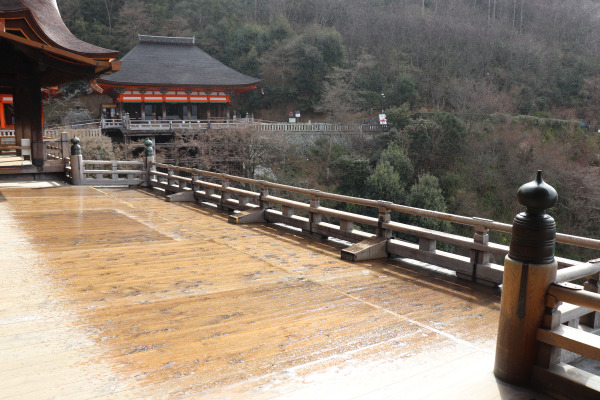
Kiyomizu-dera Temple, its veranda, or butai in Japanese, is the most popular. It is 13m high, and offers a magnificent view of the temple.
Surprisingly, it was constructed by just joining beams of wood together without any nails at all.
When Japanese people decide something very big, they sometimes say “kiyomizu no butai kara tobioriru!” i.e “[I’m] Jumping from Kiyomizu’s veranda!” though this phrase sounds a bit out-dated now.
Surprisingly some people in old times did literally jump from this veranda to see if they can survive it or not.
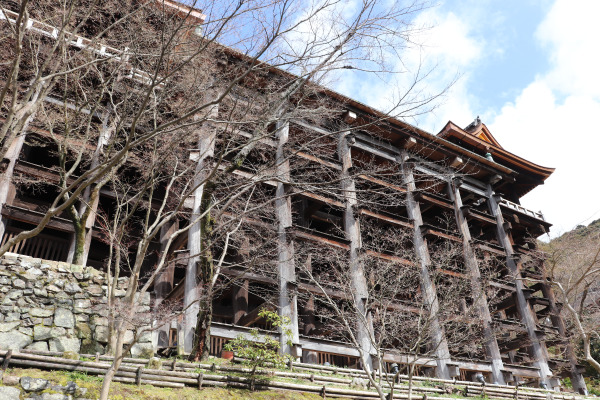

From the hondo, you can go as far as the okunoin, and if you wish to take pretty pictures of Kiyomizu-dera Temple, the okunoin is the best spot.
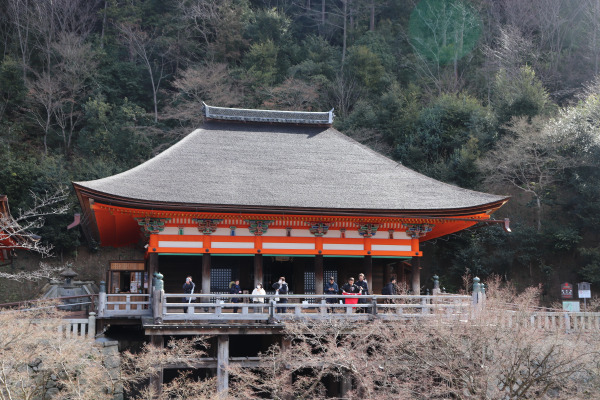
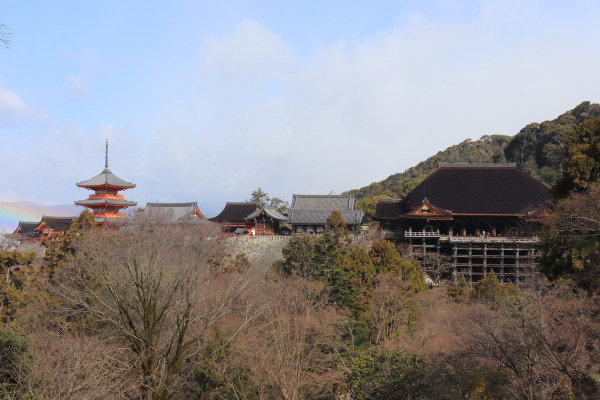
Kiyomizu-dera Temple is espeially pretty around fall when you can see pretty fall foliage or in spring when you can see nice sakura.
I wish I could come when the temple is lightly covered with snow!!
Otowa Waterfall
Right beneath the main hall is Otowa Waterfall. The very name of this temple is derived from the presence of this waterfall, and the water from the spring of these falls has been flowing for more than a thousand years.
As you can see, there are three channels of water fall into a pond. You can actually drink this sacred waters and each of the channels has a different benfit; health, love, and study, respectively.
You may be tempted to drink all from all three, but remember, greed is really bad in Buddhism!!


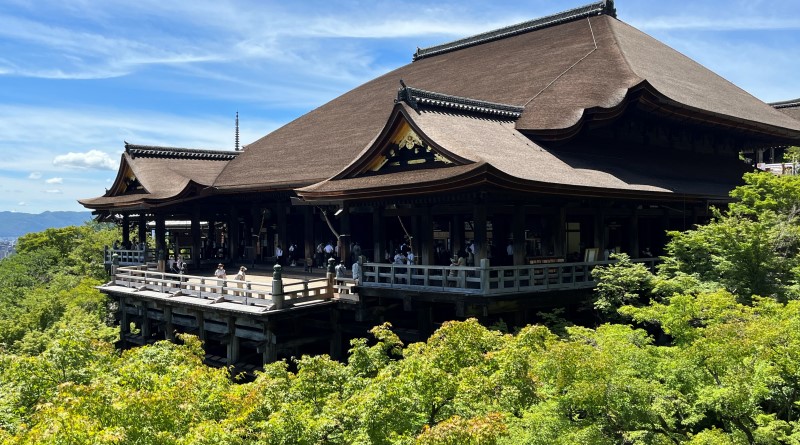
Leave a Reply